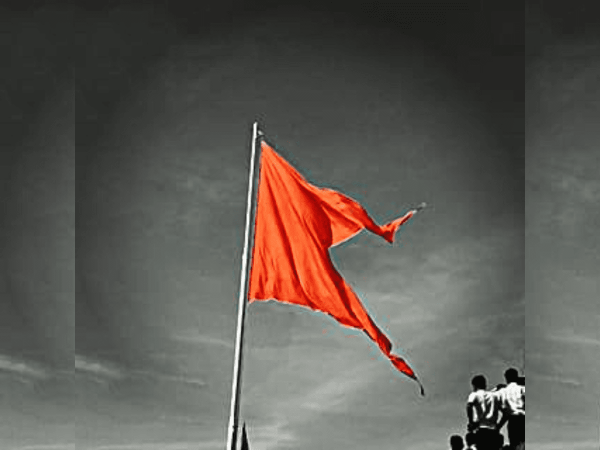
Kolkata: Incidents of violence against Hindus in adjoining Bangladesh and the 2026 assembly elections in West Bengal have significantly amplified the scale and political significance of Ram Navami celebrations in the state this year.
What has traditionally been a religious occasion has morphed into a political battleground, as the ruling TMC and opposition BJP have engaged in a fierce contest over polarisation and counter-polarisation.
The BJP, looking to consolidate Hindu votes ahead of next year’s polls, has made Ram Navami a focal point of its campaign.
Hindutva groups, including the VHP and the RSS, have set a target of mobilising over three crore people and taking out rallies in every block in West Bengal during the week-long celebrations starting on April 6.
According to BJP leaders, these processions will serve as a symbolic protest against the alleged attacks on Hindus in Bangladesh and what they described as the TMC’s “appeasement politics.”
“The attacks on Hindus in Bangladesh are an eye-opener for those on this side of the border. If we don’t resist now, Hindus in West Bengal may face a similar fate due to the TMC’s appeasement policies,” state BJP president and Union minister Sukanta Majumdar told PTI.
“Hindus of West Bengal are already facing similar attacks from jihadis supported by the TMC,” he alleged.
Majumdar said this year’s Ram Navami celebrations will be a “response” to such atrocities.
VHP West Bengal secretary Chandra Nath Das identified three key reasons behind the growing traction of Ram Navami: a record number of Bengali devotees visiting the Kumbh Mela and Ram Mandir in Ayodhya, the emotional connection of many Hindus in the state with their persecuted relatives across the border, and a rising discontent against the state government’s alleged policies of minority appeasement.
“This year’s Ram Navami has given people an opportunity to express their anger and voice their protests. The celebrations will act as a stepping stone for Hindu unity ahead of next year’s elections. The more the Hindu community is attacked, the stronger its response will be,” Das told PTI.
A senior RSS functionary, speaking on condition of anonymity, echoed similar sentiments.
“Every action has an equal and opposite reaction. If Hindus are attacked in Bangladesh and West Bengal, there will be a reaction. If we can successfully celebrate Ram Navami, then Hindus in Bangladesh will also have a sense of satisfaction that their atrocities have not gone unheard,” he said, hinting at a more aggressive Hindutva assertion.
Compared to the 1,000 processions taken out in 2024, around 3,000 processions are expected to be brought out this year, with an extended reach into rural areas. According to VHP sources, at least 100 processions are expected to see crowds exceeding 35,000 participants each, with several anticipated to surpass 50,000 attendees.
BJP leaders see these rallies as a strategic move to consolidate Hindu votes in key districts where the party aims to improve its performance compared to the 2021 assembly polls.
Leader of Opposition Suvendu Adhikari recently claimed that 50 lakh Hindus participated in last year’s Ram Navami celebrations and the turnout was expected to cross one crore this year.
“In 2026, a Hindu government will be formed in West Bengal,” he declared, reinforcing the BJP’s electoral strategy.
In response, the Trinamool Congress has accused the BJP of using religion as a political tool.
TMC spokesperson Kunal Ghosh dismissed the saffron camp’s narrative, stating, “People will not accept those who run businesses in the name of religion.”
TMC MP Sougata Roy criticised the BJP’s attempts to polarise the electorate, claiming, “The BJP is deliberately trying to disturb the communal harmony of West Bengal by weaponising religious festivals. They want to divide people before the elections.”
The West Bengal administration, meanwhile, has stepped up security measures to prevent communal flare-ups during Ram Navami and Eid.
The state has witnessed multiple communal flashpoints around Ram Navami processions in recent years. In 2018, large-scale violence erupted in Asansol, leaving several people dead. Similar tensions were seen in 2019, 2022, and 2023 when group clashes broke out in districts such as Murshidabad, Howrah, and Malda.
The violence against Hindus in Bangladesh has added a new dimension to the Ram Navami mobilisation in West Bengal. According to reports, several temples and hundreds of Hindu homes have been attacked since August last year in Bangladesh, following political upheaval in the country.
This has become a key issue in West Bengal’s politics, with the BJP staging statewide protests against the atrocities and accusing the TMC of overlooking the suffering of persecuted Hindus there.
“Our Bengali Hindu brothers in Bangladesh are under siege. We cannot allow such persecution to happen here,” senior BJP leader Dilip Ghosh said.
However, TMC leaders accused the BJP of using the Bangladesh issue as a tool for polarisation.
“The BJP is trying to import communal issues from Bangladesh into West Bengal to gain votes. This is dangerous politics,” state minister Firhad Hakim said.
Political observer Suman Bhattacharya said, “Had the BJP and the Hindutva groups been serious about Hindu unity, they should have spoken out against atrocities on Dalits and backward communities as well. The fact is, BJP wants to establish Brahminical supremacy by propagating its Hindutva agenda.”